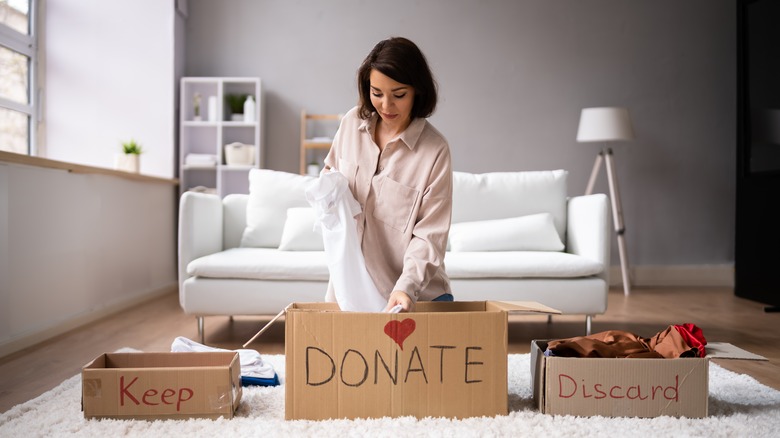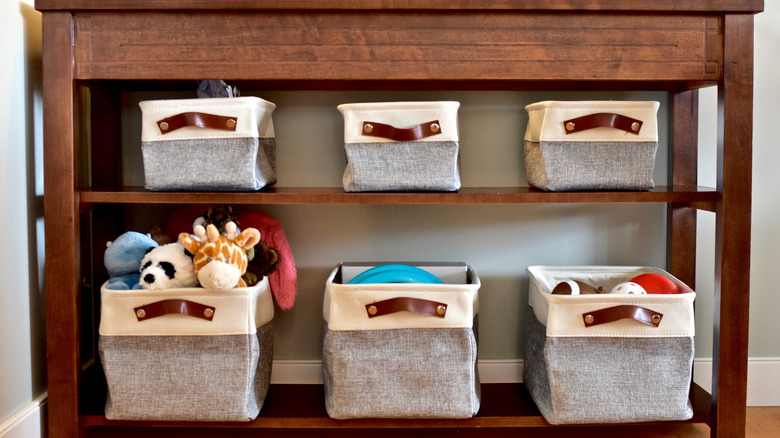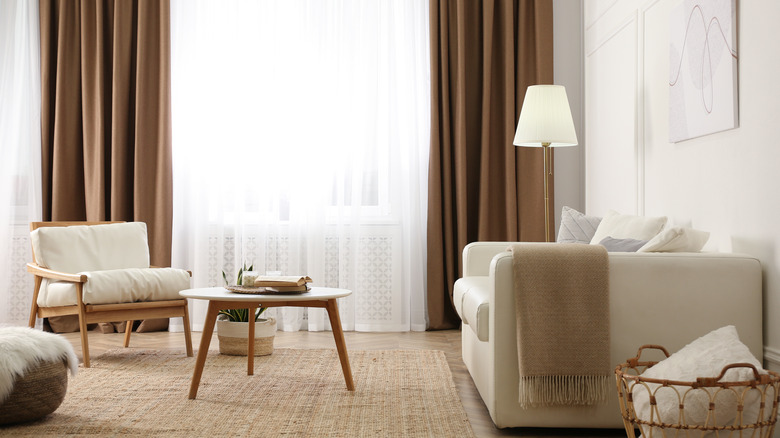Martha Stewart's Best Tips And Tricks To Declutter Your Home
The state of your home reflects the state of your mind and when you have clutter all around, you may be experiencing extra daily challenges. According to Verywell Mind, living in a cluttered home can cause added stress and even increased cortisol levels.
It can also result in you functioning less than optimally. You may have trouble focusing, procrastinate, and spend wasted time looking for items that you simply can't find in the mess.
You may also feel constantly frustrated and overwhelmed by the daily disorganization because your brain works best when it can concentrate on a handful of things at any given time (via WebMD). Clutter causes your brain to become overwhelmed and leaves you feeling scattered and decreases your working memory.
On a purely physical level, clutter can cause accidents as you may trip over your surroundings on a regular basis. It's also a fire hazard, dust collector, and a recipe for pests.
Yet, decluttering is always possible and home expert Martha Stewart has the best tricks to make your home clean, neat, and cozy.
Start with the four-box method
The first thing you have to do to get organized is to attack the clutter head-on. Martha Stewart suggests creating a four-box method in her book, "The Martha Manual: How to Do (Almost) Everything" (via Milwaukee Journal Sentinel) You don't necessarily need to use boxes. You can create piles of four distinct categories: what to keep, toss, donate or sell.
Though it sounds easy enough, many times, the reason clutter occurs in the first place is because you may have a difficult time throwing things away and so year after year, items accumulate (via Living Well Spending Less). We often attach memories to things or feel guilty for getting rid of something given to us by a loved one.
According to Apartment Therapy, you can also use the 20/20 rule, meaning if it's less than $20 and you can replace it in under twenty minutes, toss it. Similarly, if it doesn't fit, you can't use it, or if you haven't used it within the past year, it's time to let it go. There is simply no point in housing multiple items that are unnecessary and unusable.
Organize the items you are keeping
Next, go room by room to put back the items you want to keep in an organized way. A good place to start is shared living spaces where the family gathers. It's a great idea to add small storage opportunities for daily clean-up in these areas.
Professional organizer Felice Cohen tells Martha Stewart that using baskets and bins can be a fashionable way to hold items, "You can put the labels on the sides if you don't want to see them—one tote for electronics, one for office supplies, school supplies, toys, etc.," says Cohen. "This makes organizing the space at the end of the day easy to do."
In all rooms, identify places from top to bottom where you can create storage. "Look high and low to maximize space," says Martha Stewart (via Milwaukee Journal Sentinel). "Mount a ledge over a door ... put under-furniture spaces to work," Stewart adds.
Once decluttered, keep it clean
With everything clean and organized, take a few photos so you can see how amazing your home looks when it's decluttered (Becoming Minimalist). Keeping the photos around will be a good visual reminder of how good your home can actually look.
Once everything is assigned its own special place, do a daily clean-up before you go to bed (and teach your kids to do this, too!). Putting things away at night enables you to wake up to a clean and clutter-free home, which starts your day off right.
Now, clean and tidy, the goal is to keep it that way. In an effort to never overwhelm your living space again, if you bring anything new into the home, you should get rid of one item in return.
When your rooms are free from clutter, it makes regular cleaning easier and quicker, so you spend less time cleaning and more time doing things that you truly enjoy.



